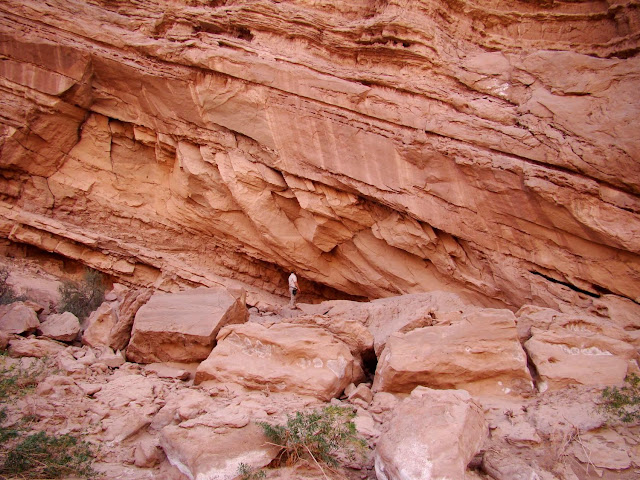Huge time-lag between erosion and mountain building
 |
| In the dry climate of the Andes rock is eroded at very slow rates. The stratification of the sandstone makes tectonic processes visible. |
An unprecedented record of erosion rates dating back millions of years shows a significant time-lag between tectonic uplift and maximum erosion rates in the Argentine Precordillera mountains. According to a new study by an international team of scientists, tectonic shortening and exhumation of rocks peaked between twelve and nine million years ago whereas the maximum erosional response is detected roughly seven million years ago, i.e. two million years later.
Incorporating these new findings into dynamic orogenic models is of high importance for predicting feedbacks between erosion and uplift, says GFZ scientist Hella Wittmann, co-author of the study in the upcoming issue of Earth and Planetary Science Letters. She adds: “Being able to quantify the erosional response to mountain building over long time scales opens new avenues in deciphering the feedbacks between tectonics and climate that interact to shape the landscape of our planet.”
Probing sandstone-outcrops in the foreland of the Argentine Precordillera, a team of scientists from Syracuse and Indiana universities, USA, and GFZ Potsdam, Germany, reconstructed the erosional history of the South-Central Andes at 30?S for the last eight million years. The scientists used a special form of Beryllium (10Be) and Aluminium (26Al) isotopes which are produced through cosmic radiation at a rate of only a few atoms per gram of material per year. Such cosmogenic nuclides form in the upper few meters of Earth’s surface. They accumulate over time once rocks are exposed to the surface. Measuring the amount of 10Be and 26Al in sediment or soil indicates the speed of erosion of the surface material — e.g. high amounts of 10Be are found in slowly eroding settings like old cratons, and few atoms are found in rapidly eroding settings like steep mountains.
Basically two ideas exist on how mountain building, through tectonic shortening, is connected with erosion: Models of orogenic-wedge dynamics predict an instantaneous response of erosion to pulses of rock uplift from isostatic compensation of mass fluxes, while stream-power based models predict a delayed response, because channel gradients are primarily controlled by the propagation of sharp changes in channel slopes (knickpoints) through the fluvial drainage network. Thus, the two-million year delay in the erosional response to tectonic shortening reflects the time necessary for an erosion wave to propagate through the fluvial network under the semi-arid conditions of the Precordillera where erosional efficiency is limited through low rates of precipitation.
The above post is reprinted from materials provided by GFZ GeoForschungsZentrum Potsdam, Helmholtz Centre.